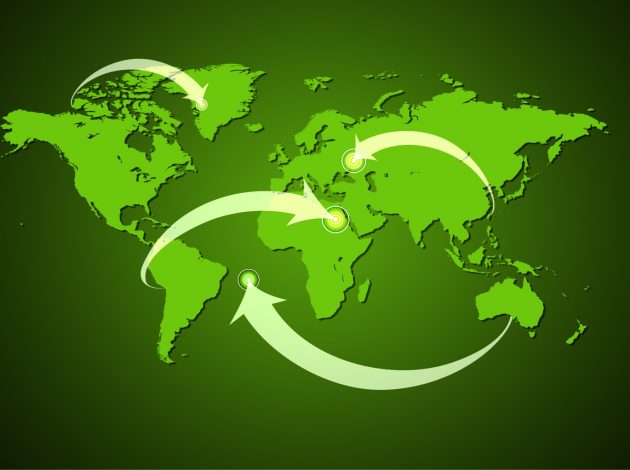We don’t need to explain why much more attention is being paid to the UK’s trade figures these days. But even before the EU referendum, ONS had embarked on an ambitious development programme to make sure we have the best possible data on the flow of imports and exports. While measuring trade in goods is relatively straightforward, tracking services is rather trickier. Here Sami Hamroush writes about the challenge of measuring so-called ‘modes of supply’ – the means by which services are exchanged across borders – and how this can reveal a sharper picture of the UK’s trade position.
When we talk about trade, people often imagine lorries passing through ports, and of course for trade in goods, this is absolutely true. However, with the UK being an overwhelmingly services dominated economy, much of our exports don’t happen physically at all. As no goods physically move across borders in trade in services, it can be a lot more difficult to accurately estimate who is supplying which services to whom.
While traditional trade in services statistics record the product being traded – for example a financial service – and who it is being traded with – for example Germany – there is no information currently available as to how these services are traded – either through the movement of people or remotely.
To increase the information available to users on how UK trade in services is conducted, we’ve been developing statistics on so-called ‘modes of supply’. Modes of supply statistics break down trade in services into four broad categories:
- Where a supplier in one country sells a service to customer in another, but without the movement of people. An example is UK legal or financial advice services being supplied by a UK business to overseas customers remotely via email or an online platform.
- Where the person receiving the service travels to the supplier’s country. For example, UK tourists travelling abroad and eating in a foreign restaurant.
- Where the foreign supplier sends its staff to the customer’s country to provide services. For example, a UK consultancy business sending its consultants to an overseas customer’s offices to provide its services.
The above three modes of supply broadly align with “traditional” trade in services statistics we publish in our Trade and Balance of Payments statistical bulletins.
However, the World Trade Organisation also includes a fourth mode of supply that sits outside traditional trade in services statistics:
- Where a foreign company sets up a subsidiary abroad to supply services to foreign customers directly in that country, such as a UK telecoms company establishing a subsidiary in a foreign country to provide mobile phone services.
The measurement of modes of supply is challenging and a relatively underdeveloped area of statistics. Nevertheless, we have tested the feasibility of producing these new statistics and have added new questions to our quarterly International Trade in Services Survey that will allow us to collect data on the amount of trade in services that is conducted remotely, without the movement of people (the first mode in the examples above).
Excluding the establishment of a commercial presence abroad, remote trade in services is estimated to account for nearly two-thirds of “traditional” trade in services according to Eurostat.
If we determine that the data collected are of sufficient quality, we hope to produce new UK estimates for trade in services by modes of supply by summer 2019. This will be achieved by combining data collected on the proportion of services that are traded remotely with assumptions based on the direction of movement of people associated with each services product. For example, apportioning the remainder of computer services that are not traded remotely to the movement of the supplier’s personnel travelling to the customer.
In addition to our trade statistics, we also produce statistics that look at the number of visitors travelling to and from the UK e.g. for tourism or business meetings – alongside the number of people migrating to and from the UK longer term such as for study or work. While not directly related to our work on modes of supply, we know that users of our statistics want more detailed analysis on these travel patterns, to understand how these impact and contribute to our economy, workforce and public services. This is why we are transforming the way we produce migration statistics – making use of wider data sources, such as Home Office visa data, to better meet this need in future. You can find out more in a blog by Jay Lindop, head of the ONS Centre for International Migration, which updates on our progress so far and plans for the future. Changes to our migration statistics will help provide further data and information to better understand the purposes of movement of people.
Currently, statistics on modes of supply are still in their infancy, with little available in terms of international guidelines and only a small number of countries having attempted to produce these new statistics. Our recent work in this area places us as a world leader in producing these more detailed statistics, which are in line with our continued efforts to improve the reliability, granularity and usefulness of international trade and investment statistics.
Sami Hamroush is Head of Balance of Payments at the Office for National Statistics
